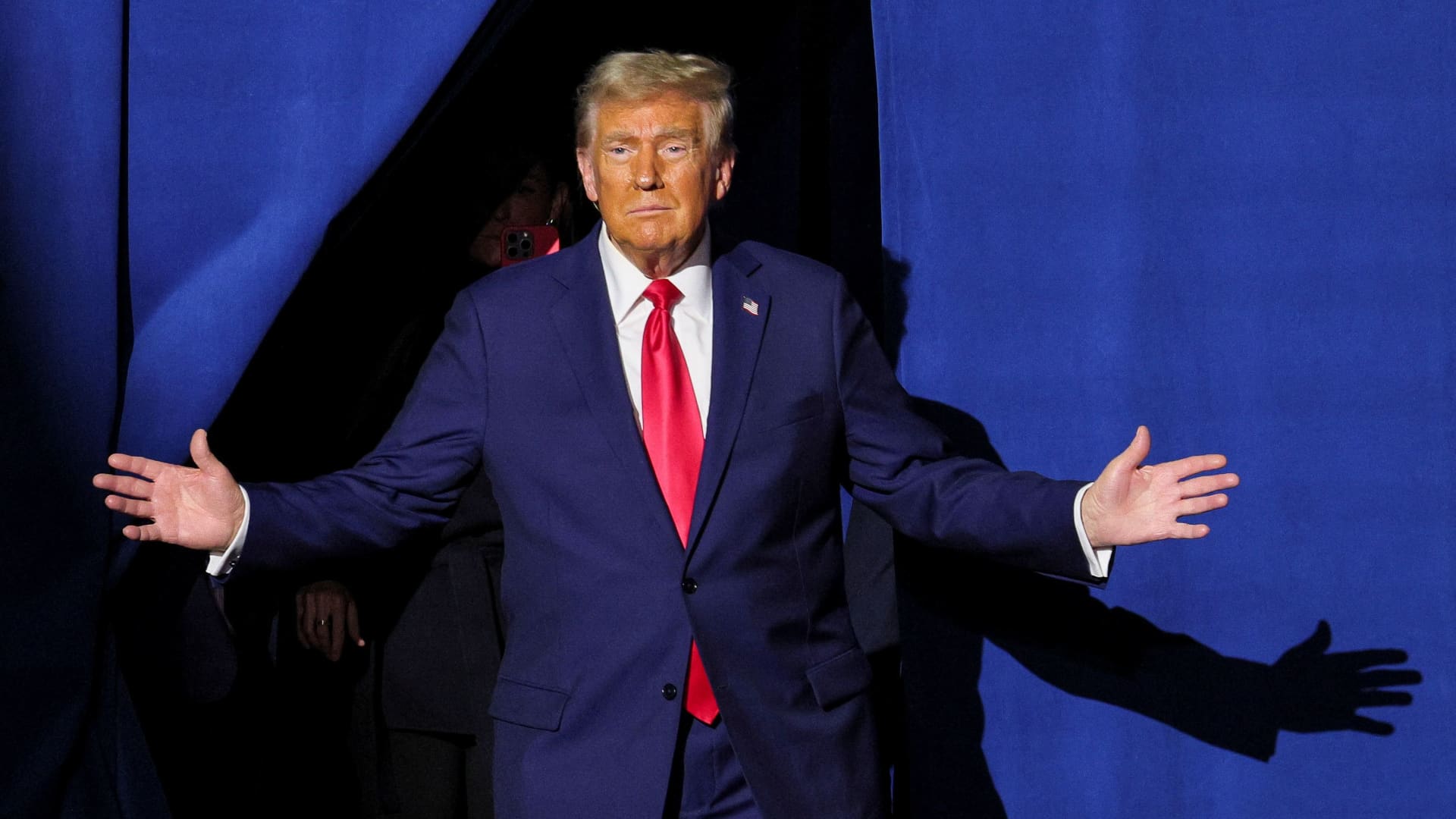Former President Donald Trump’s tax reform ideas could offer total or partial income tax exemptions to roughly 93.2 million Americans, a meaningful chunk of the U.S. electorate, according to CNBC’s analysis of several estimates.
As part of his economic pitch to voters, Trump has floated a sweeping tax overhaul, including a slate of income tax breaks.
So far, the Republican presidential nominee has officially proposed eliminating income tax on tips and Social Security benefits, along with overtime pay. And last week, in an interview on the sports media site OutKick, Trump said he would consider tax exemptions for firefighters, police officers, military personnel and veterans.
These exemptions are part of Trump’s larger vision to transition away from the income tax system and replace it with the revenue he says would be generated by his hardline tariff proposals.
“In the old days when we were smart, when we were a smart country, in the 1890s and all, this is when the country was relatively the richest it ever was. It had all tariffs. It didn’t have an income tax,” Trump said at a sit-down with voters in New York on Friday for “Fox & Friends.” “Now we have income taxes, and we have people that are dying.”
Trump has pledged to impose a 20% universal tariff on all imports from all countries with a specific 60% rate for Chinese imports.
Tax experts reject the notion that tariff revenue could offset the losses incurred by eliminating income taxes.
“The math doesn’t work out,” Garrett Watson, a senior policy analyst at the nonpartisan Tax Foundation, told CNBC.
He said Trump’s tariffs would raise approximately $3.8 trillion over the next decade, far less than the roughly $33 trillion of estimated revenue generated by income taxes over the same period.
Given that tariffs are paid by U.S. importers and those costs have historically been passed on to consumers, Trump’s strategy appears to be based around a notion of replacing income tax revenue with a kind of invisible sales tax.
Tariffs, much like sales tax and other point-of-sale costs, tend to have the biggest impact on low-income consumers, for whom the amounts represent proportionately larger slices of their monthly budgets.
If implemented, Trump’s income tax exemptions could affect tens of millions of taxpayers.
Roughly 68 million Americans receive Social Security benefits each month, according to the Social Security Administration. And in 2023, about 4 million workers were in tipped jobs, according to an estimate from Yale University’s Budget Lab.
The U.S. Department of Veterans Affairs approximated in March 2023 that there were 18.6 million living veterans. There are 1.3 million active-duty military personnel, according to the Department of Defense. And there are 800,000 sworn law enforcement officers and roughly 500,000 paid firefighters.
Taken together, these reforms could leave about 93.2 million people off the hook for at least a portion, if not all, of their income taxes.
That accounts for about 38% of the 244 million Americans eligible to vote in 2024.
This total excludes the many more people who would be exempt from part of their income taxes if Trump executed his proposed elimination of taxes on overtime pay. And the total could vary based on how much overlap there is between the taxpayer groups Trump has proposed to give tax breaks to.
The tax exemptions on tips, overtime pay and Social Security benefits would reduce federal tax revenue by $2 trillion over the next 10 years, according to the Tax Foundation.
“Trump’s proposed tax exemptions for tips, Social Security benefits, overtime work, and potentially for workers of certain occupations follows a trend of promising narrowly targeted tax benefits without a strong underlying policy rationale and no consideration on how these proposals would impact revenue collections or the complexity of the tax system,” the Tax Foundation’s Watson told CNBC.
Factoring in Trump’s tariff plans and other tax cuts, his overall plan would reduce federal tax revenue by an estimated $3 trillion from 2025 to 2034, the Tax Foundation estimated.
Analysts see Trump’s scheme to move away from income taxes as something of a pipe dream.
“Spoiler alert: We don’t think tariffs will replace income taxes,” Evercore analysts wrote in a June report.
Vice President Kamala Harris’ campaign did not immediately respond to CNBC’s request for comment about Trump’s tax plans.
Trump’s proposed erosion of the income tax system comes as he also pledges to make permanent his 2017 tax cuts, which are due to expire in 2025.
But even if Trump were to win the November election against Harris, his tax overhaul will not see the light of day without a Republican majority in the House of Representatives, which is where all tax bills originate.
Republicans currently control the House with a razor-thin margin. Control of the chamber will hinge on the outcome of a small number of competitive districts in November.

